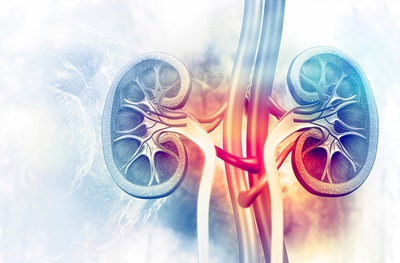
PHILADELPHIA — Kidneys from donors who were infected with the Hepatitis C virus (HCV) function just as well as uninfected kidneys throughout the first year following transplantation, according to a new Penn Medicine study. The analysis of kidney transplant recipients across the United States, published today in the Journal of the American Society of Nephrology, also revealed a threefold increase in the number of transplant centers using HCV-infected kidneys and a major change in how the organs are allocated.
Prior to September 2018, the majority of HCV-infected organs were transplanted into patients who already had HCV infection. Since then, however, nearly 75 percent of the patients who were transplanted with HCV-infected kidneys did not already have the virus. Researchers reported similar one-year outcomes for both groups of patients. Despite the increased use of HCV-infected organs and promising outcomes, the Kidney Donor Profile Index (KDPI) Calculator – which combines a variety of donor factors to summarize the likelihood of organ failure after deceased donor transplant – still assigns much worse risk scores to organs from HCV-positive donors.
"These striking results provide additional evidence that the KDPI does not accurately assess the quality of kidneys from HCV-positive donors," said the study's corresponding author Peter Reese, MD, MSCE, an associate professor of Medicine and Epidemiology. "Rescaling the index to reflect these positive outcomes might lead clinicians to offer these kidneys to younger patients with longer life expectancy, when clinically appropriate, and could help expand access for the nearly 100,000 Americans awaiting a kidney transplant."
For decades, most HCV-infected organs in the United States were discarded partly because of concerns that the organs were associated with significantly lower survival rates. However, in recent years, the emergence of new antiviral treatments, coupled with the growing need for kidney transplants, prompted the launch of new studies to test the safety and efficacy of transplanting HCV-infected kidneys into patients on the waitlist who did not have the virus. The studies, including a trailblazing clinical trial launched by Penn Medicine in 2016, revealed that the use of HCV-infected kidneys – when followed by antiviral therapy – can lead to very good transplant outcomes for patients.
However, questions remained about whether the HCV-infected organs would function comparably to similar uninfected kidneys – particularly in patients who did not have the virus – and whether the promising results of the single-center studies would be confirmed in a larger, nationwide study.
A team of researchers, led by Reese and Vishnu Potluri, MD, MPH, an instructor of Nephrology at Penn, analyzed national transplant registry data to examine the use of HCV-infected kidneys between April 2015 and March 2019. To measure how well the kidneys functioned compared to uninfected kidneys, researchers designed highly-similar matched sets, in which the donors had nearly identical qualities – including age, weight and history of high blood pressure – except for HCV status. Researchers then used a widely-used mathematical formula, called the Chronic Kidney Disease Epidemiology Collaboration equation, to estimate each recipient's glomerular filtration rate (eGFR) – a measure that determines how well the blood is filtered by the kidneys. The lower the GFR number, the worse the kidney function. For example, having a GFR below 60 is abnormal. In their analysis, researchers found that recipients who received HCV-infected kidneys had an eGFR of 66.3 at the one-year mark. Patients who received uninfected kidneys had an eGFR of 67.1.
In addition to finding HCV-infected kidneys functioned similarly to uninfected kidneys, the team found transplant centers and patients were increasingly willing to accept the organs. For example, the number of transplant centers using HCV-infected kidneys jumped from 11 in 2015 to 39 centers through the first three months of 2019. Despite the increased acceptance and use of these kidneys, researchers found that nearly 40 percent of the HCV-infected kidneys donated between January 2018 and March 2019 were discarded.
"While the discard rate of these organs has declined in recent years, our findings suggest there is still substantial opportunity to expand the use of HCV-infected organs," said Potluri, the study's lead author. "Our results suggest we should make it a priority to maximize the use of good-quality HCV-infected organs."
Additional Penn Medicine authors include David S. Goldberg, Roy D. Bloom, Deirdre Sawinski, Peter L. Abt, Emily A. Blumberg and K. Rajender Reddy.
The work was supported, in part, by a Ben J. Lipps grant from the American Society of Nephrology.





